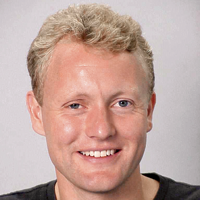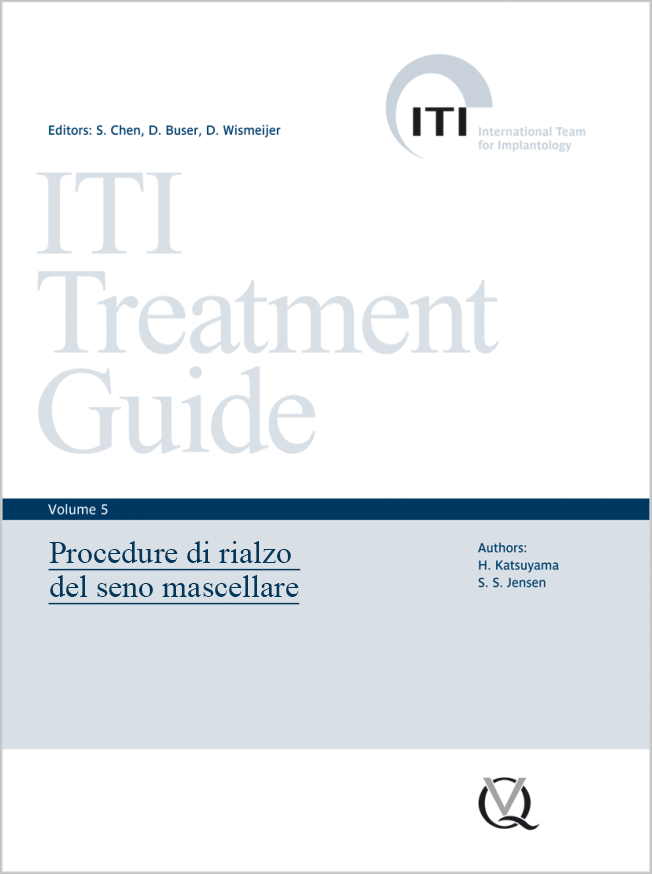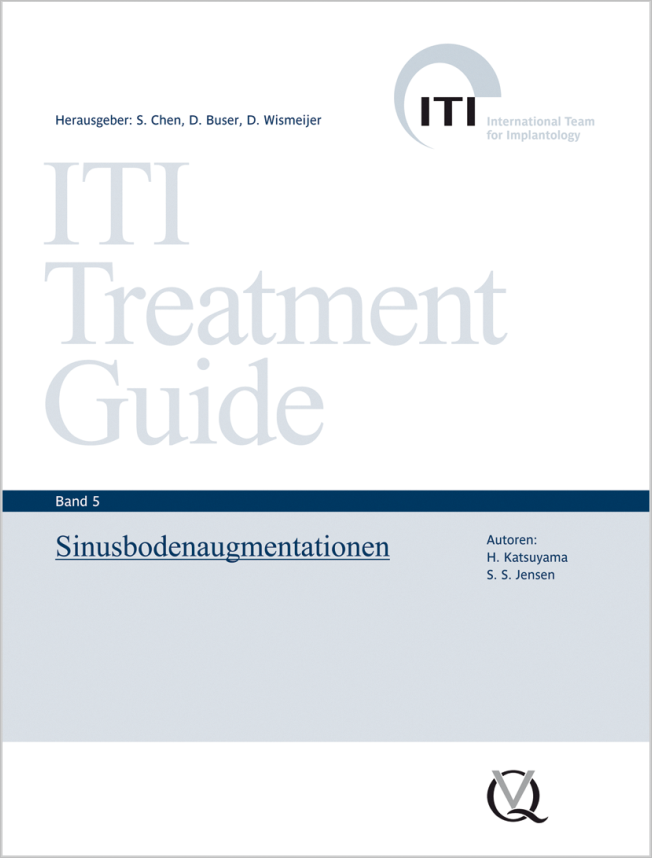Oral Health and Preventive Dentistry, 1/2023
Open Access Online OnlyOral HealthDOI: 10.3290/j.ohpd.b3858615, PubMed-ID: 367278362. Feb. 2023,Seiten: 33-40, Sprache: EnglischFogh, Frederikke Maria / Jensen, Simon Storgård / Kofod, Thomas / Lauridsen, EvaPurpose: To investigate the survival rate of dental implants in patients diagnosed with osteogenesis imperfecta (OI).
Materials and Methods: The study is a retrospective analysis of six individuals (2 males, 4 females) with OI (type I, III and IV) with a total of 25 dental implants. Clinical examination included plaque index, gingival index, periodontal pocket depth for each implant, presence of pus, and loosening of the implant(s). Marginal bone loss was measured on radiographs. The observation period ranged from 2–17 years (mean:7.5 years, median: 5 years).
Results: The overall implant survival rate was 80%. One patient with OI type III lost five implants. However, four out of five lost implants functioned for 11 years.
Conclusion: Dental implant treatment seems to be a valid option for replacing missing teeth in OI patients. It is recommended that patients diagnosed with OI undergo the same preoperative evaluation as regular dental implant patients with special emphasis on a healthy periodontal status and ideal oral hygiene.
Schlagwörter: dental implants, implant success, implant survival, osteogenesis imperfecta
International Journal of Oral Implantology, 4/2013
PubMed-ID: 24570978Seiten: 323-324, Sprache: EnglischJensen, Simon StorgardInternational Journal of Oral Implantology, 3/2012
PubMed-ID: 23000712Seiten: 287-291, Sprache: EnglischJensen, Simon Storgard / Eriksen, Jacob / Schiodt, MortenAim: To present a rare but clinically significant complication to sinus floor elevation (SFE) using the transcrestal technique.
Materials and methods: Transcrestal SFE with simultaneous implant placement was performed in the maxillary right second premolar region of a healthy 70-year-old woman with no history of a bleeding disorder.
Results: The patient reported to the emergency care unit a few hours after the surgery with ongoing bleeding and progressive swelling of especially the right side of the midface. The buccal swelling did not allow the patient to close her mouth and the discoloration extended to the sternum. A computed tomography scan showed pronounced swelling of the facial soft tissue and the right sinus cavity completely filled with blood. The patient was kept hospitalised for 3 days until regression of the swelling was attained and acceptable oral function was regained.
Conclusion: Transcrestal SFE is often recommended to the less experienced surgeon before the lateral window technique due to fewer complications and lower morbidity. The present case illustrates that severe complications may accompany transcrestal SFE. Although rare, clinicians performing SFE should be aware of this potential risk.
Schlagwörter: complication, dental implants, haemorrhage, sinus floor elevation, vascularisation
The International Journal of Oral & Maxillofacial Implants, 7/2009
SupplementPubMed-ID: 19885447Seiten: 218-236, Sprache: EnglischJensen, Simon Storgard / Terheyden, HendrikPurpose: The objective of this review was to evaluate the efficacy of different grafting protocols for the augmentation of localized alveolar ridge defects.
Materials and Methods: A MEDLINE search and an additional hand search of selected journals were performed to identify all levels of clinical evidence except expert opinions. Any publication written in English and including 10 or more patients with at least 12 months of follow-up after loading of the implants was eligible for this review. The results were categorized according to the presenting defect type: (1) dehiscence and fenestration-type defects, (2) horizontal ridge augmentations, (3) vertical ridge augmentations, and (4) maxillary sinus floor elevations using the lateral window technique or transalveolar approach. The review focused on: (1) the outcome of the individual grafting protocols and (2) survival rates of implants placed in the augmented bone.
Results and Conclusion: Based on 2,006 abstracts, 424 full-text articles were evaluated, of which 108 were included. Eleven studies were randomized controlled clinical trials. The majority were prospective or retrospective studies including a limited number of patients and short observation periods. The heterogeneity of the available data did not allow identifying one superior grafting protocol for any of the osseous defect types under investigation. However, a series of grafting materials can be considered well-documented for different indications based on this review. There is a high level of evidence (level A to B) to support that survival rates of implants placed in augmented bone are comparable to rates of implants placed in pristine bone.
Schlagwörter: bone grafting, bone-substitute material, dental implant, ridge augmentation, sinus floor elevation
The International Journal of Oral & Maxillofacial Implants, 7/2009
SupplementPubMed-ID: 19885450Seiten: 272-278, Sprache: EnglischChen, Stephen T. / Beagle, Jay R. / Jensen, Simon Storgard / Chiapasco, Matteo / Darby, IvanThe International Journal of Oral & Maxillofacial Implants, 6/2005
Seiten: 843-853, Sprache: Englischvon Arx, Thomas / Broggini, Nina / Jensen, Simon Storgard / Bornstein, Michael M. / Schenk, Robert K. / Buser, DanielPurpose: The objective of the present study was to histologically evaluate barrier durability and host tissue response of new prototype collagen membranes in comparison to clinically available collagen and synthetic polymer membranes.
Materials and Methods: The experimental study was conducted in 20 rabbits with 4 different healing periods of 2, 6, 12, and 28 weeks. Following surgical exposure of the calvarium, 6 circular bone defects (diameter 4 mm, depth 1.5 mm) were drilled into the outer cortex. After the bone had been removed, each defect was covered with 1 of 6 different membranes: 3 collagen prototype membranes, a Bio-Gide collagen membrane (BG), a glycolide-lactide-trimethylene carbonate Osseoquest membrane (OQ), and a polylactide Atrisorb membrane (AS). Histological analysis was performed following staining with toluidine blue and transversal sectioning of the calvarial bone.
Results: All collagen membranes showed similar tissue integration characterized by fibrous encapsulation with differentiation of a periosteumlike tissue upon the external bony surface. One prototype collagen membrane displayed clearly longer membrane integrity. The evaluated synthetic membranes demonstrated extended barrier durability but also exhibited inflammatory foreign-body reactions.
Discussion: Recent experimental investigations have shown that degradation of collagen membranes may begin within days to weeks of membrane placement. This was confirmed in the present study. However, 1 of the chemically modified collagen prototype membranes exhibited prolonged membrane integrity in the absence of an inflammatory tissue response.
Conclusion: Further investigation of the prototype membrane that showed prolonged membrane integrity to evaluate its potential in GBR procedures is needed.
Schlagwörter: aliphatic polymers, bioresorbable barrier membranes, collagen, membrane degradation, tissue reactions
The International Journal of Oral & Maxillofacial Implants, 5/2005
Seiten: 703-712, Sprache: EnglischJensen, Simon Storgard / Broggini, Nina / Weibrich, Gernot / Hjørting-Hansen, Erik / Schenk, Robert / Buser, DanielPurpose: To evaluate the effect of the addition of platelet concentrate (PC) to autografts or bone substitutes on bone regeneration in standardized bone defects.
Materials and Methods: Three standardized bone defects were prepared in both mandibular angles of 12 adult minipigs. The defects were grafted with autograft, anorganic bovine bone, or synthetic b-tricalcium phosphate (b-TCP). PC was added to only 1 side. The animals were divided into 4 groups, which were sacrificed at 4 different time points (1, 2, 4, and 8 weeks) for histologic and histomorphometric analysis. The concentrations of platelets and growth factors were measured to identify correlation to the histologic and histomorphometric results.
Results: No correlation was found between platelet count in whole blood and platelet count in PC (rp = 0.36). Furthermore, no correlation could be demonstrated between the platelet count of the PC and the concentrations of PDGF-AB (rp = -0.27) and TGF-b (rp = 0.34). There were no signs of a stimulating effect of PC on bone formation in combination with autografts or bone substitutes at any time point (P = .89). Addition of PC did not alter the pattern of graft degradation.
Discussion: The present study underlines the need for further investigation to identify the optimal concentrations of platelets and combinations of growth factors to achieve a predictable stimulatory effect on bone regeneration. One of the first steps to achieve this goal will be the development of a reliable method for the procurement of PC.
Conclusion: PC had no impact on bone formation and graft degradation in standardized bone defects in the mandibles of minipigs.
Schlagwörter: autogenous bone grafting, bone regeneration, bone substitutes, growth factors, platelet concentrates, platelet-rich plasma
The International Journal of Oral & Maxillofacial Implants, 1/1996
Seiten: 55-66, Sprache: EnglischJensen, Simon Storgård / Aaboe, Merete / Pinholt, Else Marie / Hjørting-Hansen, Erik / Melsen, Flemming / Ruyter, I. EysteinThe aim of the present study was to qualitatively and quantitatively compare the tissue reactions around four different bone substitutes used in orthopedic and craniofacial surgery. Cylinders of two bovine bone substitutes (Endobon and Bio-Oss) and two coral-derived bone substitutes (Pro Osteon 500 and Interpore 500 HA/CC) were implanted into 5-mm bur holes in rabbit tibiae. There was no difference in the amount of newly formed bone around the four biomaterials. Interpore 500 HA/CC resorbed completely, whereas the other three biomaterials did not undergo any detectable biodegradation. Bio-Oss was osseointegrated to a higher degree than the other biomaterials. Material characteristics obtained by diffuse reflectance infrared Fourier transform spectrometry analysis and energy-dispersive spectrometry did not explain the differences in biologic behavior.
Schlagwörter: bone substitute, bovine bone, calcium carbonate, coral, material characteristics, material resorption, porous hydroxyapatite





